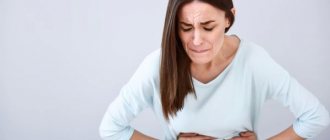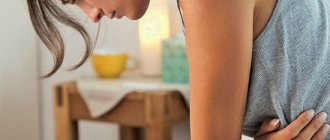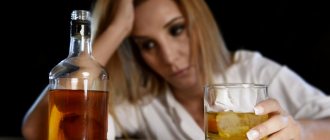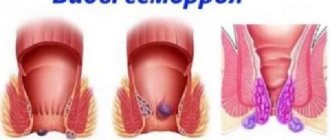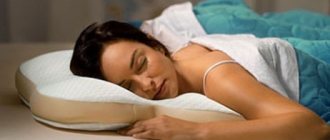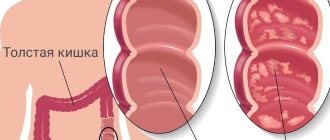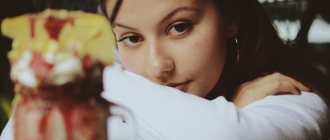The article will discuss a natural reflex mechanism, which is not a pathology or disease. But sometimes it can be pronounced, which worries the patient. What is the basis of this mechanism? All organs of our digestive tube, from the esophagus to the rectum, are connected (like a computer network) to each other by a network of special cells - interstitial cells of Cajal. Therefore, another part of the digestive system “knows” about the state of one section of the digestive system. The meaning of the gastrocolytic reflex is quite obvious and understandable: after all, you need to make room after eating new food, right? Therefore, it is quite common to hear about the appearance of the urge to go to the toilet, say, half an hour to an hour after breakfast. But for some people, this reflex goes into overdrive, leading to bowel movements immediately after eating.
Sometimes patients come to me with complaints of this kind: “I have stool immediately after eating,” or “I immediately want to go to the toilet after eating.” This is an enhanced gastrocecal reflex. It is not a separate disease in itself and is part of irritable bowel syndrome.
So what to do?
If you constantly want to go to the toilet after eating, you need to understand the following: there is no specific pill that will fix this (as there is no treatment for irritable bowel syndrome in general). Changes in lifestyle are necessary: - if possible, reduce the number of stress factors. It is very important for residents of megacities - limit coffee consumption - reduce the size of food portions (increase the frequency of meals) - limit fried and spicy foods - drink enough liquid - get enough sleep (yes, for those who spend time on social networks after midnight)
If symptoms do not go away with lifestyle changes, a consultation with a proctologist and gastroenterologist can be recommended. Moreover, it is necessary to exclude more serious pathologies, for example, Crohn's disease, ulcerative colitis and colon cancer.
If you find a typo in the text, please let me know. Select a piece of text and press Ctrl+Enter.
Tags: reflexes
- Related Posts
- Why does the fistula not heal?
- How does peristalsis work?
- Migrating motor complex: or how the intestines self-cleanse
« Previous entry
The main causes of diarrhea after eating
Proper nutrition is the key to a healthy intestine.
If frequent loose stools are observed immediately after eating, this indicates functional disorders in the intestines: the food bolus quickly moves through the gastrointestinal tract, while the food is not properly digested and absorbed.
There may be several reasons for this condition:
- Disorders of the nervous system. This condition is known as “bear sickness” or irritable bowel syndrome. The patient may encounter it during a period of prolonged stress; for example, the syndrome may occur in students during a session. Neurogenic diarrhea is usually only part of a complex of symptoms; prolonged stress can lead to vegetative-vascular dystonia and various neuroses.
- Infectious intestinal lesions. This is a more drastic, but possible reason: the body seeks to empty the intestines of food that it considers dangerous. To eliminate a painful condition, it is necessary to cope with its cause using medicinal methods.
- Dysbacteriosis. This is a disorder of the intestinal microflora, which can develop after long-term use of antibiotics or a violation of the diet. If the body is unable to digest food, it tends to get rid of it, which can lead to diarrhea.
Intestinal upset can also result from eating unusual or spoiled food. In this case, it lasts no more than 1-2 days, and if the process does not stop, you should consult a doctor.
Diarrhea not only brings discomfort and interferes with everyday life: frequent loose stools lead to dehydration and the leaching of essential microelements such as magnesium and potassium. It is especially dangerous for children, so young patients need to be taken to a doctor as quickly as possible.
Symptoms of stomach pain
Severe stomach pain is considered a clear sign that you have problems with the gastrointestinal tract. In addition to diarrhea, patients exhibit accompanying symptoms:
- Gastrointestinal tract disorder.
Many begin to experience diarrhea, and among the people, diarrhea, which indicates indigestion. Diarrhea is caused by various factors. Intestinal upset continues several times a day. If this process lasts more than two days, then the patient begins to develop chronic diarrhea.
- Nausea and vomiting.
Sometimes these symptoms are accompanied by bloody discharge. The patient feels sharp cutting pain in the stomach area.
- Temperature increase.
When an infection affects the body, patients experience an increase in temperature. This indicates a serious infectious pathology
- Lack of appetite.
This symptom is caused by gastritis and ulcers. With such diagnoses, the patient feels a cutting pain in the stomach.
- Bad breath.
This symptom indicates liver problems. It is worth introducing plenty of fluids. A nutritionist will prescribe an individual diet for you to stabilize your body.
- Bloating or flatulence indicates disturbances in the gastrointestinal tract.
Diet "Table No. 4"
Indications
- chronic colitis;
- enterocolitis during exacerbation;
- acute gasteroenterocolitis;
- dysentery;
- typhoid fever;
- intestinal tuberculosis;
- diarrhea.
Cooking rules
Food is boiled, steamed, served pureed or pureed. The food should be warm. The diet excludes solid, cold and hot, as well as spicy foods.
Recommended diet
Bread products:
wheat bread made from premium flour, savory cookies, wheat bread crackers, yesterday's baked goods in limited quantities.
Cereals and pasta:
rice, semolina, oatmeal, pureed buckwheat, cooked in water or low-fat broth, steamed noodles.
Milk and dairy products:
pureed cottage cheese, fresh or unleavened, steam soufflé.
Soups:
soups in low-fat, weak meat, chicken or fish broth with rice, semolina, noodles, meatballs, slimy soups in the same broths with butter.
Meat and meat dishes:
lean meats, beef, veal, chicken, turkey, pureed, minced or boiled in water or steamed.
The minced meat is passed through a meat grinder with a fine grid two or three times. Fish and fish dishes:
low-fat boiled or steamed fish, pike perch, carp, perch.
Vegetables:
Vegetables can only be eaten in the form of decoctions.
Eggs and egg dishes:
soft-boiled eggs, steam omelet, but no more than one egg per day.
Appetizers:
raw vegetable salads and vinaigrettes with vegetable oil, vegetable caviar, fruit salads.
Lean ham, soaked herring, meat and fish in the form of jellied dishes. Berries and fruits:
applesauce, jelly and juice of non-acidic berries, black currants, blueberries, dogwoods, quince, bird cherry.
Sweets:
sugar in limited quantities.
Drinks:
tea, coffee, cocoa in water, juices of non-acidic berries and fruits diluted with water, decoctions of dried berries, rose hips.
Foods and dishes that need to be excluded
Bread products:
rye and fresh bread, as well as pastry products, pancakes, pancakes.
Cereals and pasta:
millet, pearl barley and barley, crumbly cereals, legumes, and pasta casseroles.
Milk and dairy products:
whole milk, kefir, cream, sour cream, cheese.
Soups:
soups with strong, fatty broth, milk soups, cold and bean first courses.
Meat and meat dishes:
fatty meats, pork, lamb, goose, duck, sausages, ham, smoked meats, canned meat.
Fish and fish dishes:
fatty fish, salted, smoked, marinated fish, canned fish.
Vegetables:
Raw vegetables are completely excluded.
Eggs and egg dishes:
raw, fried, hard-boiled eggs.
Snacks:
fatty and spicy dishes, smoked meats.
Berries and fruits:
fresh fruits and berries, dried fruits, compotes.
Sweets:
honey, jam.
Drinks:
coffee and cocoa with milk, kvass, grape juice, carbonated and cold drinks.
Sample diet menu No. 4 for a week
Monday
- 1st breakfast: oatmeal with water, soft-boiled egg, tea.
- 2nd breakfast: a serving of low-fat cottage cheese.
- Lunch: low-fat meat broth with semolina, rice and steamed chicken quenelles, apple broth.
- Afternoon snack: quince jelly.
- Dinner: mashed potatoes with squash caviar, softened boiled hake fillet.
- Before bed: a decoction of rose hips.
Tuesday
- 1st breakfast: semolina porridge with water, rosehip decoction, small crackers.
- 2 breakfast: applesauce.
- Lunch: rice soup with meatballs, buckwheat porridge, turkey cutlets, quince broth.
- Afternoon snack: jelly, small cracker.
- Dinner: steamed omelette, rice and fish meatballs, green tea.
- Before bed: carrot juice diluted with water.
Wednesday
- 1st breakfast: rice porridge with water, pureed lean cottage cheese, tea.
- 2nd breakfast: homemade quince jelly.
- Lunch: chicken broth with rice and egg flakes, boiled rabbit meatballs, pureed buckwheat, blackcurrant broth.
- Afternoon snack: warm jelly, a small cracker.
- Dinner: pureed rice porridge, steamed lean fish quenelles, tea.
- Before bed: oatmeal and blueberry jelly.
Thursday
- 1st breakfast: semolina porridge on water, steam omelette, tea.
- 2nd breakfast: dogwood berry jelly.
- Lunch: puree soup of rice, potatoes and carrots, veal meatballs, compote.
- Afternoon snack: oatmeal jelly.
- Dinner: one poached egg, buckwheat porridge puree, green tea.
- Before bed: apple juice (diluted).
Friday
- 1 breakfast: buckwheat porridge with water, 1 boiled egg, apple broth.
- 2nd breakfast: baked apple.
- Lunch: slimy soup with rolled oats and egg flakes, steamed hake fillet meatballs, tea.
- Afternoon snack: semolina pudding.
- Dinner: cottage cheese and rice casserole, boiled veal soufflé, rosehip infusion.
- Before bed: jelly.
Saturday
- 1st breakfast: rice pudding with egg, low-fat cottage cheese, tea.
- 2nd breakfast: blueberry decoction, crackers.
- Lunch: semolina soup with chicken fillet meatballs, crackers, rosehip infusion.
- Afternoon snack: rice water.
- Dinner: curd pudding, soft-boiled egg, oatmeal jelly.
- Before bed: carrot juice (diluted).
Sunday
- 1st breakfast: steamed buckwheat pudding with cottage cheese, fresh apple puree, green tea.
- 2nd breakfast: warm blueberry and bird cherry jelly.
- Lunch: potato-semolina soup, boiled rabbit meat, compote.
- Afternoon snack: decoction of pears, crackers.
- Dinner: rice porridge with sugar and a piece of butter, 1 poached egg, green tea.
- Before bed: jelly.
Important!
The medical diet “Table No. 4” is prescribed exclusively by the attending physician, based on the medical history and studies performed.
Diagnostic methods
A qualified doctor will always help with treatment.
How to determine when it's time to see a specialist? First of all, you need to pay attention to the nature of the disease. If there is no pus or blood in the stool, this indicates the absence of serious intestinal damage.
If it has a greasy appearance and a strong unpleasant odor, this is a sign of the presence of fat in the stool, that is, the digestion of food is not completed. The doctor will ask the patient in detail about the frequency of bowel movements, the appearance of urges at night, and the diet.
Signs of infection will include fever, bloating, nausea, and deterioration in general health. If an intestinal infection is suspected, the doctor may suggest hospital treatment to prevent infection of others.
What else do severe cutting pains in the stomach indicate?
Pain in the stomach indicates a malfunction of the esophagus. Among them: liver disease, hepatitis, cholelithiasis, cholecystitis, inflammation of the gallbladder. If the location of the pain cannot be determined, then the symptoms are associated with neoplasms.
When the first complaints appear, we advise you to contact a gastroenterologist. The doctor will help heal the body as quickly as possible. An accurate diagnosis is established after undergoing examinations and tests. Self-diagnosis at home is impossible.
Intestinal spasm
Cramping pain, characteristic of intestinal spasm, can occur due to disturbances in various mechanisms of intestinal motility. The main links in the pathogenesis of intestinal spasm: overstretching of the intestinal wall, irritation of nerve endings, disturbance of the tone of the smooth muscles of the intestine with a disorder in the mechanisms of its contraction, the occurrence of pathological peristalsis (antiperistalsis, weakening or strengthening of peristaltic waves, disappearance of peristalsis in some parts of the intestine), the occurrence of an obstacle to promote the food bolus.
Intestinal spasms can occur against the background of digestive disorders - acute and chronic gastritis, stomach and duodenal ulcers, hepatitis, pancreatitis, etc. In case of disturbances in the digestion of food in the stomach and initial parts of the intestines, an untreated bolus of food enters the intestines and causes excessive irritation of its receptors, muscle spasm . Another common cause of intestinal spasms is errors in nutrition - the mechanism of development of colic is the same as with digestive disorders, but irritation of the intestinal wall occurs from too cold, spicy, fried, dry, stale food, products made from yeast dough, etc.
Intestinal colic can also develop due to intoxication - with generalized viral infections (influenza, ARVI), poisoning with industrial and plant poisons, salts of heavy metals. In these cases, intestinal spasm occurs due to the effects of poisons and toxins on the neuromuscular apparatus of the intestine. Intestinal infections can also be the cause of this pathology: the proliferation of bacteria in the intestinal lumen has a complex effect, causing irritation of nerve endings, excessive exudation with overstretching of the intestinal wall, and disturbances in peristalsis.
Asthenic people with a labile psyche, prone to strong emotions, often experience cramping abdominal pain associated with intestinal spasms during stressful situations. During emotional shocks, the autonomic regulation of intestinal motility is disrupted.
Intestinal spasm is also characteristic of helminth infections: worms parasitizing in the digestive tube are able to gather into balls and conglomerates that block the lumen of the intestinal tube. In addition, the helminths themselves and their metabolic products irritate the nerve endings in the mucous membrane.
With intestinal obstruction, spastic contractions of the intestinal muscles are also possible. Spasm most often occurs against the background of intestinal obstruction by a tumor, foreign body, coprolites and gallstones, helminth balls, and bezoars. There are frequent cases of the development of intestinal colic in adhesive intestinal obstruction that occurs against the background of inflammatory diseases of the abdominal cavity and pelvis, surgical interventions, and radiation. The intestines try to overcome the obstacle by gradually increasing peristalsis, which ultimately leads to spasm.
Depending on the cause and location of the pathological process, separate types of intestinal spasm are distinguished. The appendicular type develops in the presence of an inflammatory process in the appendix. Usually, some time after appendicular colic, a clinical picture of appendicitis appears. The rectal type is associated with spasm of the rectum and is manifested by a frequent strong urge to defecate. The lead type of intestinal spasm accompanies lead poisoning, which is characterized by high fever, tension in the anterior abdominal wall, gray plaque on the gums, and bleeding from the mouth. The vascular type is associated with intestinal hypoperfusion against the background of a hypertensive crisis, atherosclerosis, thrombosis of mesenteric veins, compression of blood vessels by a tumor or adhesions.
